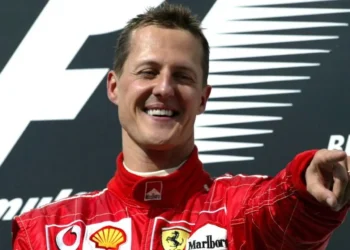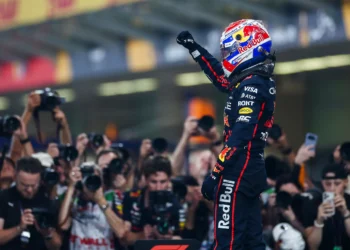The FIA and Pirelli have teamed up to address the tyre issues that turned the 2023 Qatar Grand Prix into a safety scramble. After last year’s race saw drivers limited to an 18-lap stint cap due to tyre sidewall separations caused by aggressive kerbing, the sport’s governing body and tyre supplier are implementing significant changes to ensure a smoother event in 2024.
Last Year’s Tyre Trouble
The Lusail International Circuit presented a unique challenge in 2023 with its 50mm pyramid kerbs. These sharp-edged kerbs, designed to cater to both F1 and MotoGP events, caused microscopic separations in the sidewalls of Pirelli tyres. The high-speed nature of the circuit compounded the issue, forcing the FIA to mandate a three-stop race to prioritize safety.
While the situation created an intriguing strategic spectacle, it was not one the FIA wanted to repeat. The changes for 2024 aim to strike a balance between safety and competitiveness while accommodating both two- and four-wheeled racing.
Kerb Modifications and Gravel Strips
To mitigate tyre damage, the pyramid kerbs at key corners (Turns 4, 10, 12, 13, and 14) have been rounded off. This adjustment reduces the sharpness of the kerbs, making them less punishing on tyre sidewalls.
Additionally, gravel strips have been added behind certain kerbs to discourage drivers from running excessively wide. This not only improves safety but also enforces track limits more effectively.
Pirelli’s Testing and Harder Compounds
Pirelli has been rigorously testing the revised kerbs at its Motorsport R&D Department in Milan, comparing the results with data from past sessions in Qatar. To handle the circuit’s high-speed, high-load demands, Pirelli will bring its hardest three tyre compounds—the C1, C2, and C3—previously used at challenging tracks like Silverstone and Suzuka.
The tyre supplier will also closely monitor thermal degradation caused by Qatar’s heat. While the November race date should bring cooler temperatures than last year’s October event, engineers remain cautious about how the tyres will cope with the desert circuit’s unique demands.
Heat and Strategy Challenges
Qatar’s heat, though less extreme than in 2023, still poses a challenge. While last weekend’s Las Vegas Grand Prix tested tyres under frigid conditions, the Qatar GP will present the opposite problem: managing thermal degradation in warm temperatures. This contrast adds a layer of complexity for teams as they fine-tune their setups.
The last November race at Lusail, in 2021, saw some drivers opt for a one-stop strategy, but that was under a different generation of F1 cars and tyres. With the current cars’ increased downforce and tyre sensitivity, there are plenty of unknowns heading into this weekend.
What to Watch For
- Tyre Performance: Will the harder compounds and kerb adjustments eliminate the safety concerns from last year?
- Heat Management: How will teams and Pirelli handle the thermal challenges of a desert race?
- Strategies: Will we see another three-stop race, or can teams push for fewer pit stops?
- Track Limits: With gravel strips in place, watch for penalties as drivers test the limits of the revised kerbs.
Conclusion: Prepared but Cautious
The FIA and Pirelli have taken proactive steps to prevent a repeat of last year’s tyre fiasco, but the 2024 Qatar Grand Prix still carries uncertainties. With revised kerbs, harder compounds, and the ever-present challenge of desert conditions, teams face a tough but potentially rewarding race weekend. Will the changes bring stability, or will Qatar once again test the limits of modern Formula 1? The answers lie in the desert heat.










